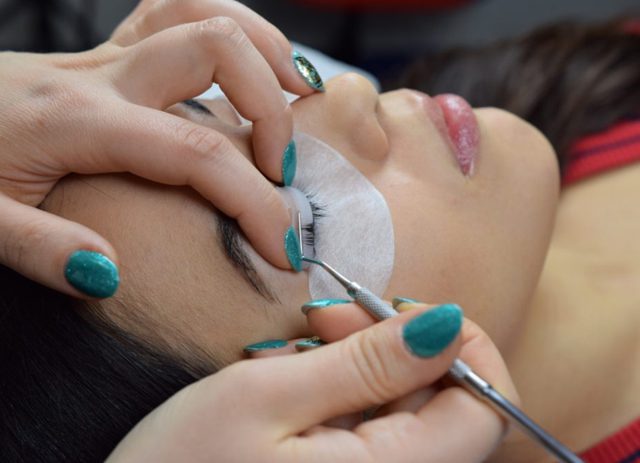Silikoonpatjade suuruse valimine on ülioluline, et saavutada just selline kaarduvus, mida su kliendid soovivad. Liiga suured või liiga väikesed silikoonpadjad võivad põhjustada kehva tulemuse või isegi kahjustada kliendi ripsmeid. Vale suurus võib põhjustada ripsmete ületöötlemist, mille tulemuseks on haprad, murduvad või ebaloomuliku välimusega karvad. Samas ideaalselt sobivad silikoonpadjad annavad kaunilt kaardus, tõstetud ripsmed, mis toovad silmad esile ja tulemus kestab nädalaid.Õige suuruse valimine võib alguses tunduda keeruline, kuid teadmiste ja katsetamisega leiad kiiresti igale ripsmetüübile sobivad silikoonpadjad. Siin on juhend, kuidas valida õiget suurust ja saavutada lash lifti protseduuriga maksimaalne tulemus.
Silikoonpatjade suuruse valik
Silikoonpadjad, mida kasutatakse lash lifti protseduuril, on tavaliselt saadaval järgmistes suurustes:
- Väike (S) – loob tugeva kaarduvuse, sobib lühikestele ripsmetele
- Keskmine (M) – mõõdukas kaarduvus, sobib keskmise pikkusega ripsmetele
- Suur (L) – pehme koolutus, ideaalne pikematele ripsmetele
- Väga suur (XL) – loomulik ja õrn koolutus väga pikkade ripsmete puhul

Üldiselt, mida väiksem silikoonpadi, seda tugevam kaarduvus. Väikesed padjad sunnivad ripsmeid järsemalt kaarduma, sest neil on vähem pinda, millele toetuda. Suuremad silikoonpadjad võimaldavad ripsmetel lamada laugemalt, tulemuseks pehmem ja loomulikum välimus. XL-suurus sobib väga pikkade ripsmete puhul, kus piisab vaid kergest koolutusest ripsmejuurelt.Liiga väikeste silikoonpatjade kasutamine võib põhjustada ripsmete ülekaardumist ja ebaloomulikku välimust, samas kui liiga suured silikoonpadjad ei pruugi ripsmeid piisavalt tõsta. Seetõttu on õige suurus edu võti.
Ripsmepikkuse hindamine
Õige suuruse valimiseks alusta oma kliendi ripsmete hindamisest:
- Pikkus: mõõda pikimad ripsmed juurest tipuni.
- Lühikesed: alla 8 mm
- Keskmised: 8–12 mm
- Pikad: üle 12 mm
- Paksus: Hinda, kas ripsmed on peened, keskmised või paksud. Peenikesed ripsmed vajavad sageli väiksemat silikoonpatja, et saavutada tugevam kaarduvus.
- Silmakuju: kas silmad on ümarad, mandlikujulised, raskete laugudega või sügaval asetsevad – see mõjutab soovitud kaarduvuse intensiivsust.
Kasuta puhast ripsmeharja, et ripsmed läbi kammida ja näha nende tegelikku pikkust ja tihedust. Mõõtmiseks kasuta joonlauda või spetsiaalset tööriista.
Hinda ka ripsmete paksust:
- Peenikesed – õhukesed ja õrnad
- Keskmised – standardne tihedus
- Paksud – tugevad ja tihedad
Peened ripsmed vajavad sageli väiksemat silikoonpatja intensiivsemaks koolutuseks, samas kui paksud ripsmed taluvad paremini suuremat silikoonpatja loomulikuma tulemuse saavutamiseks.
Vaata ka silmakuju – ümarad silmad võivad vajada tugevamat kaarduvust, mandlikujulised või raskete laugudega silmad pehmemat ripsmekoolutust. Sügaval asetsevad silmad vajavad tavaliselt väiksemat silikoonpatja, mis mahuks mugavalt silmalaule.
Silikoonpadja suuruse valimine
Lähtudes ripsmete omadustest:
- Lühikesed ja peened ripsmed – väikesed (S) silikoonpadjad
- Lühikesed ja paksud ripsmed – väiksed (S) või keskmised (M)
- Keskmise pikkuse ja tihedusega ripsmed – keskmised (M) silikoonpadjad
- Pikad ripsmed – suured (L) silikoonpadjad
- Väga pikad ripsmed – väga suured (XL) silikoonpadjad
Kui kliendil on lühikesed ja peened ripsmed, annavad väikesed (S) silikoonpadjad kõige dramaatilisema tulemuse. Kui ripsmed on lühikesed, aga tugevad, võib katsetada ka keskmise suurusega silikoone.
Keskmise pikkuse ja tihedusega ripsmete puhul töötavad kõige paremini keskmise (M) suurusega silikoonpadjad, mis annavad tasakaalus kaarduvuse ja tõstavad ripsmeid. Pikemate ripsmete jaoks vali suured (L) silikoonpadjad, mis tõstavad ripsmeid pehmemalt.
Väga pikkade ripsmete korral kasuta väga suuri (XL) silikoonpatju, mis loovad õrna ja loomuliku kaarduvuse ripsmejuurest.
Need on üldised soovitused – vajadusel katseta erinevaid suurusi, et leida täiuslik sobivus.
Nõuanded parimate tulemuste saavutamiseks
- Aseta silikoonpadi võimalikult ripsmepiiri lähedale, ilma nahka venitamata
- Kammi ripsmed silikoonpadja peale ühtlaselt ja eralda nad hoolikalt
- Vajadusel lõika silikoonpatja, et see sobituks paremini silmakuju järgi
- Kasuta lash lifti liimi säästlikult – liiga palju liimi võib põhjustada tükke ja takistada losjoonide toimimist
- Järgi täpselt tootja juhiseid mõjuaja osas vastavalt ripsmetüübile
Paigaldustehnika on sama oluline kui õige suurus. Kui silikoonpadi on õigesti paigaldatud ja ripsmed ühtlaselt eraldatud, saavutad kaunid, püsivad ja loomulikud lash lifti tulemused.
Paigaldustehnika on sama oluline kui silikoonpadja õige suurus. Alusta sellest, et asetad silikoonpadja võimalikult ripsmepiirile, ilma et see pigistaks või tiriks õrna silmaümbruse nahka. See tagab, et ripsmed on tõstetud ja kaarduvad juba juurest alates, luues dramaatilisema ja kauapüsivama tulemuse.
Kasuta ripsmete eraldamiseks spetsiaalset tööriista, Y kammi või harja ning tõmba ripsmed hoolikalt ja ühtlaselt silikoonpadja peale. Veendu, et ripsmed oleksid üksteisest eraldatud, mitte üksteise külge kinni kleepunud. Kui silikoonpadjad tunduvad kliendi silmakuju jaoks liiga laiad, võib neid kääridega veidi kärpida, et saavutada parem sobivus. Ole siiski ettevaatlik, et mitte liiga palju ära lõigata, kuna see võib mõjutada kaarduvuse mustrit.
Lash lifti liimi kasutamisel ole kerge käega ja väldi selle liigset kuhjamist. Piisab õhukesest ja ühtlasest kihist, et ripsmed püsiksid paigal. Liiga palju liimi võib põhjustada ripsmete kokkukleepumist ja ebaloomulikku välimust. Samuti võib paks liimikihist takistada lash lift losjoonide korralikku imendumist ja aeglustada kuivamist.
Järgi oma lash lifti toodete juhistes väljatoodud mõjuaegu. Erinevad koostised võivad sõltuvalt ripsmetüübist ja soovitud tulemustest nõuda pisut erinevaid töötlusaegu. Juhistest kinnipidamine aitab vältida ripsmete üle- või alaprotsessimist. Kui kasutad õiget suurust silikoonpatju ja head paigaldustehnikat, saavutad imelised, kauapüsivad tulemused, mis toovad esile kliendi loomuliku ilu.
